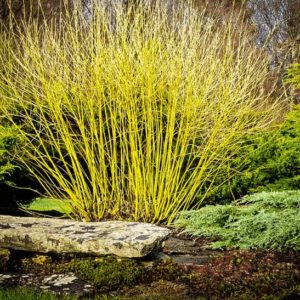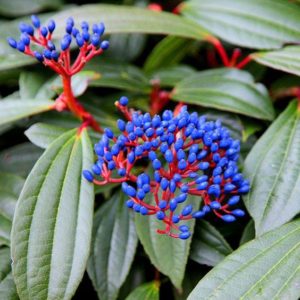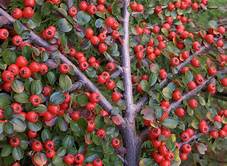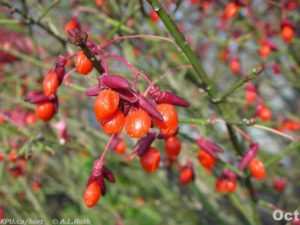Everyone has their opinion of what makes something a joy to the eye. In winter everything is finely edited by our cold weather and killing frosts and further focused when snowfall covers the landscape, but that only means we have a showcase for some shrubs that make the winter landscape beautiful and interesting.
Some shrubs are:
Red osier dogwood, sometimes called red willow or red twig dogwood, is a deciduous shrub. The bright green bark, twigs and leaves of spring and summer turn to a deep red to burgundy in fall. The leaves drop in fall, fully revealing the rich color and structural element of the red stems. Some cultivars – ‘Flaviramea’ or ‘White Gold’ are available that boast yellow stems instead of red and are sometimes called Golden-twig Dogwood.

Viburnums are shrubs just about everyone loves. They get large, but because they have flower, elegant foliage, and berries, they are all season choices. Cranberry Bush (Viburnum trilobum) has the showiest fruits.

Cotoneasters have interesting branching patterns, black berries, and persistent foliage. One of the toughest shrubs for the Midwest.
Rosa Rugosa “Hansa” and Rosa glauca are two variety of roses with large colorful rosehips, and the one is a scented delight in summer, while the other has a lovely glaucous bloom on the foliage.
Witch hazel is a deciduous shrub that accents winter. Delicate, threadlike petals bloom from late fall to early spring on this multi stemmed rounded plant. In addition to its petals, which curl up at night but unfurl on a sunny day, it emits a lovely fragrance, a pleasant surprise in the depths of cold weather. Flowers range from yellow to red, depending on the cultivar. Cultivars to consider are ‘Advent’, bright yellow blooms; ‘Ruby Glow’ for copper-red; and ‘Jelena’ for red toward base, orange in the middle, and yellow at the tip.
The euonymus group consists of low-growing shrubs with variable habits that make them valuable in different garden designs. The most-often used euonymus is the burning bush, and, like it, many euonymus varieties feature stunning fall color. Others are grown for their showy fruits—typically hot pink and orange—or sprawling evergreen habit holding onto their berries well into the winter. The fish-bone euonymus is a low growing, flat.


